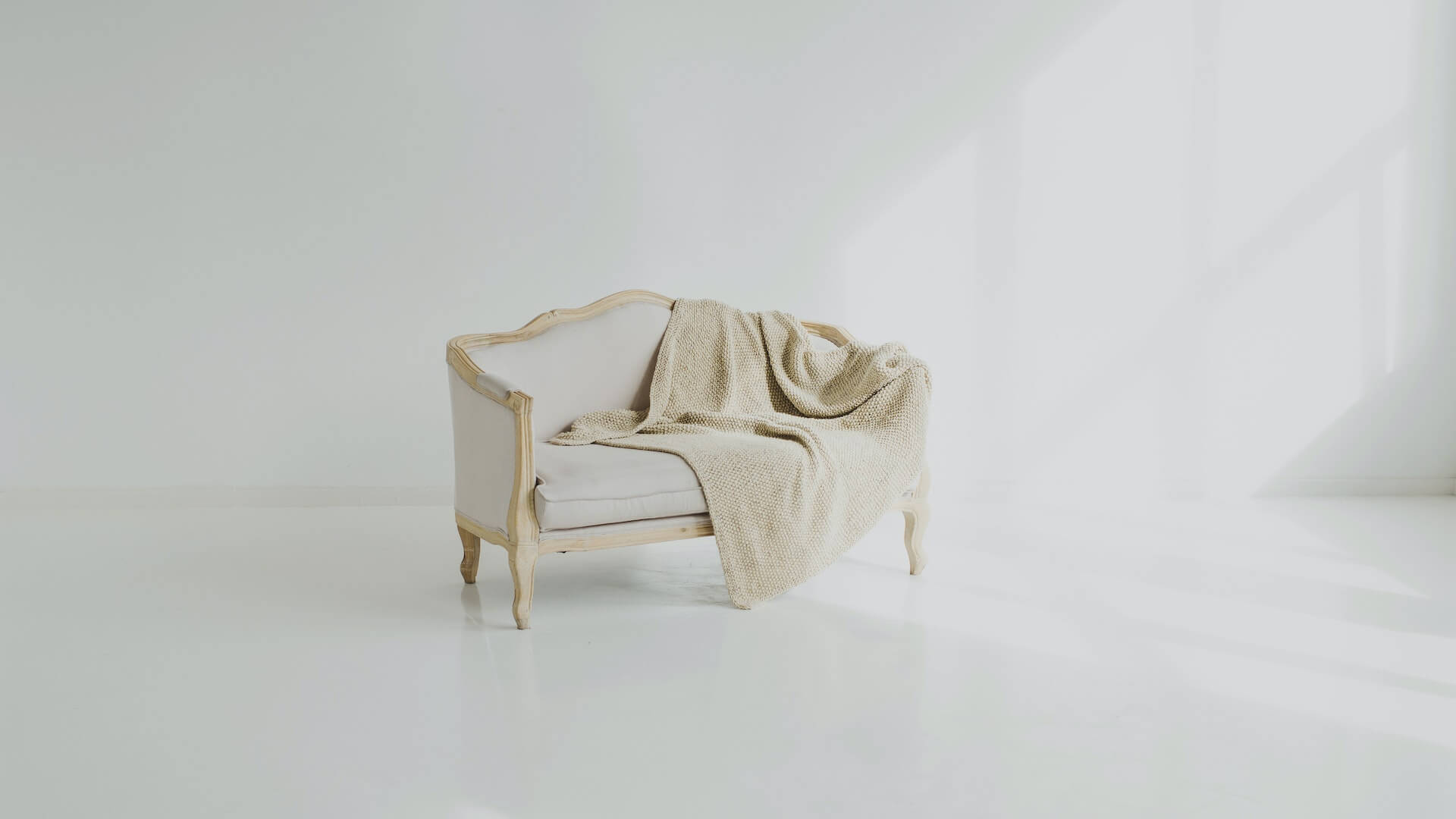In a modern society where consumerism is constantly pushed on us, the idea of minimalism can seem daunting, yet it’s becoming increasingly popular. The art of simple living is not just a trend, it’s a lifestyle that can lead to a more fulfilling and balanced life. Minimalism is a way of life that encourages us to focus on what truly matters and to let go of the things that don’t. It’s about simplifying our lives by decluttering our homes, simplifying our schedules and embracing a more mindful way of living. By living simply, you can free up time, money, and energy to pursue the things that matter most to you. In this post, we’ll explore the benefits of minimalism and provide some practical tips on how to embrace simple living for a more fulfilling life.
Defining minimalism: Understanding the essence of a simple living approach
Defining minimalism is at the core of understanding and embracing a simple living approach. In a world that often glorifies excess and material possessions, minimalism offers an alternative path to finding true fulfillment and contentment.

At its essence, minimalism is about intentionally choosing to live with less. It is a conscious decision to remove the clutter and excess from our lives, both physical and mental, and focus on what truly matters. It is not about deprivation or living in stark emptiness, but rather about creating space for what brings us joy, purpose, and meaning.
Minimalism encourages us to question the societal norms and expectations that drive us to constantly acquire more and accumulate possessions. It invites us to reevaluate our relationship with material possessions and shift our focus towards experiences, relationships, personal growth, and contribution to the world.
Embracing a minimalist mindset means letting go of the belief that happiness and success are directly linked to the number of belongings we possess. Instead, it emphasizes the importance of mindful consumption, conscious decision-making, and the pursuit of a simpler, more intentional life.
By simplifying our physical surroundings, organizing our spaces, and decluttering our homes, we create a sense of calm and clarity. We free up time and mental energy that can be directed towards activities and pursuits that truly align with our values and aspirations.
Minimalism goes beyond the physical realm and extends to our digital lives, commitments, and even our thoughts. It encourages us to declutter our schedules, say no to unnecessary obligations, and cultivate a sense of mindfulness and presence in our daily lives.
The benefits of embracing minimalism: How it can enhance your overall well-being
One of the key benefits of embracing minimalism is the sense of freedom it brings. By decluttering your physical space and letting go of unnecessary belongings, you create a more organized and serene environment. This can lead to reduced stress levels and an increased sense of calmness in your daily life.
Minimalism also helps to prioritize your time and energy. By simplifying your commitments and obligations, you can focus on activities and relationships that truly bring you joy and fulfillment. This newfound clarity allows you to invest your resources in areas that align with your values and goals, leading to a more meaningful and purposeful existence.
Financial freedom is another advantage of embracing minimalism. By reducing your expenses and limiting unnecessary purchases, you can save money and allocate your resources towards experiences and opportunities that enhance your life. This financial security provides a sense of stability and peace of mind.
Moreover, minimalism encourages intentional consumption and sustainable living. By being mindful of the items you bring into your life, you can reduce waste, contribute to a healthier environment, and support ethical and responsible brands. This conscious approach to consumerism not only benefits the planet but also fosters a sense of gratitude and appreciation for the things you do have.
Decluttering your physical space: Practical tips for organizing and letting go
Decluttering your physical space is an essential step towards embracing minimalism and creating a fulfilling life. It’s about letting go of unnecessary possessions and creating a space that aligns with your values and promotes peace and harmony.

To start decluttering, begin by setting aside dedicated time for this task. It’s important to approach it with patience and a clear mindset. Here are some practical tips to help you organize and let go:
1. Start small:
Begin with one area or room at a time. Trying to declutter your entire home in one go can be overwhelming. Focus on one space, such as a closet or a kitchen counter, and work your way through the different areas gradually.
2. Sort and categorize:
Create separate piles for items you want to keep, donate, sell, or discard. Be honest with yourself about what you truly need and what brings value to your life. If an item no longer serves a purpose or brings you joy, it might be time to let it go.
3. One in, one out rule:
Adopt a policy of bringing in new items only when you remove something else. This helps prevent clutter from accumulating again and encourages mindful consumption.
4. Create functional storage solutions:
Invest in storage containers, bins, and organizers to give everything a designated place. This not only helps keep your space neat but also makes it easier to find and access items when needed.
5. Digitize and go paperless:
Embrace digital solutions to reduce paper clutter. Scan important documents and store them securely on your computer or in the cloud. Switch to electronic billing and unsubscribe from unnecessary mailing lists to minimize paper waste.
6. Let go of sentimental attachments:
Sentimental items can be the hardest to declutter. Take a moment to reflect on the memories associated with them and consider if keeping the physical object is necessary for preserving those memories. Sometimes, taking a photo or writing about the item can be enough to cherish the sentiment.
7. Regular maintenance:
Decluttering is not a one-time task; it requires ongoing maintenance. Make it a habit to regularly assess your possessions and identify any items that have overstayed their welcome. This helps prevent clutter from building up again in the future.
Streamlining your digital life: Managing technology and digital distractions
We find ourselves constantly checking emails, scrolling through social media feeds, and responding to countless notifications. This constant urge to stay connected can leave us feeling drained and distracted, taking away from the simplicity and fulfillment we seek in our lives.
To embrace minimalism and create a more fulfilling life, it’s crucial to streamline your digital life. Start by decluttering your digital devices. Delete unnecessary apps, files, and emails that no longer serve a purpose. Organize your digital files and folders in a way that makes it easy for you to find what you need without feeling overwhelmed.
Next, take control of your technology usage. Set boundaries and establish designated times for checking emails and social media. Turn off notifications that aren’t essential, allowing yourself to focus on the present moment and be fully engaged in your daily activities.
Consider implementing technology-free zones or times in your home. Designate areas where technology is not allowed, such as the dining table or bedroom, promoting meaningful connections and quality time with loved ones.
Additionally, explore digital tools that can help you simplify and streamline your life. Utilize productivity apps that can help you prioritize tasks, manage your schedule, and stay organized. Find applications that align with your values and goals, whether it’s a meditation app for mindfulness or a budgeting app for financial simplicity.
Simplifying your daily routines: Creating efficiency and reducing stress
By creating efficiency and reducing stress, we can free up valuable time and mental space to focus on what truly matters.

One of the first steps in simplifying your daily routines is to declutter your physical environment. Take a look at your living space and identify items that no longer serve a purpose or bring you joy. Embrace the concept of minimalism by letting go of excess possessions and creating a space that feels open, clean, and calming. This will not only make your daily tasks easier but also contribute to a sense of tranquility and clarity in your home.
Next, streamline your daily tasks and responsibilities. Take a moment to evaluate your routines and identify areas where you can simplify and create efficiency. This could involve organizing your schedule, setting priorities, and eliminating unnecessary activities or commitments. By focusing on what truly matters and eliminating the nonessential, you’ll find yourself with more time and energy to invest in activities and relationships that bring you joy and fulfillment.
Another aspect of simplifying your daily routines is embracing automation and technology. Take advantage of the various tools and apps available to streamline tasks such as bill payments, grocery shopping, and appointment scheduling. Automating these mundane tasks not only saves time but also reduces mental load, allowing you to focus on more meaningful endeavors.
Creating daily rituals and habits can also contribute to simplicity and efficiency. Establishing a morning routine, for example, can set a positive tone for the day ahead and help you approach your tasks with clarity and focus. Incorporate activities such as meditation, journaling, or exercise to nurture your mental and physical well-being. By starting your day intentionally, you’ll be better equipped to navigate the challenges and demands that come your way.
Lastly, don’t forget the importance of self-care and rest. Simplifying your daily routines should not be about constantly striving for productivity or accomplishment. It’s about finding balance and taking care of yourself. Prioritize self-care activities such as reading, spending time in nature, or engaging in hobbies that bring you joy. By allowing yourself moments of relaxation and rejuvenation, you’ll be better equipped to handle the daily challenges with a clear and focused mind.
Cultivating a minimalist mindset: Shifting your perspective on material possessions
Cultivating a minimalist mindset involves shifting your perspective on material possessions and reevaluating the role they play in your life. It’s about embracing the idea that less is more and finding fulfillment in experiences and relationships rather than in the accumulation of stuff.
One way to start embracing minimalism is by decluttering your physical space. Take a critical look at your belongings and ask yourself if each item truly adds value to your life. If it doesn’t serve a purpose or bring you joy, consider letting it go. Donate, sell, or give away the things that no longer align with your values and priorities.
But minimalism extends beyond just decluttering. It’s about redefining your relationship with material possessions. Instead of constantly chasing after the latest trends or feeling the need to keep up with the Joneses, focus on what truly matters to you. Shift your mindset from a mindset of scarcity to one of abundance, realizing that you have everything you need to live a fulfilling life right now.
By simplifying your life and reducing the excess, you create space for what truly matters. This newfound space allows you to focus on experiences, relationships, personal growth, and self-care. It enables you to prioritize your time, energy, and resources on the things that bring you joy and fulfillment.
Embracing a minimalist mindset also involves being intentional with your purchases. Before buying something new, ask yourself if it aligns with your values and if it will truly enhance your life. Avoid impulse purchases and instead focus on quality over quantity. By being mindful about what you bring into your life, you can avoid accumulating unnecessary clutter and make more conscious choices.
Overcoming obstacles and challenges: Navigating societal pressures and consumerism
In a world that constantly bombards us with messages of materialistic desires and the need for more, embracing minimalism can be a transformative journey. However, navigating societal pressures and consumerism can present obstacles and challenges along the way.

One of the first obstacles to overcome is the fear of missing out. Society often tells us that we need the latest gadgets, trendy clothes, and luxurious possessions to be happy and fulfilled. It can be challenging to resist the urge to keep up with the Joneses and let go of the constant desire for more. But by embracing minimalism, we can shift our focus from material possessions to experiences, relationships, and personal growth. We learn to appreciate the simple joys in life rather than being constantly driven by the need to acquire more things.
Another challenge we may face is the pressure to conform to societal norms. Minimalism goes against the grain of a consumerist culture that encourages excess and accumulation. Friends, family, and even strangers may question our choices and question why we’re not chasing after the latest trends or constantly upgrading our possessions. It’s important to remember that minimalism is a personal choice, and everyone’s journey will look different. By staying true to our values and focusing on what truly brings us joy and fulfillment, we can overcome these societal pressures and live a more authentic life.
Additionally, consumerism and the constant bombardment of advertisements can create a sense of discontent and a never-ending cycle of wanting more. It takes conscious effort to resist the allure of shiny new things and instead appreciate what we already have. By practicing gratitude and shifting our mindset from scarcity to abundance, we can break free from the grip of consumerism and find contentment in the simplicity of our lives.
Embracing minimalism as a lifelong journey: Continuously evolving and adapting
As you embark on this minimalist journey, it’s important to recognize that your needs, values, and priorities may change over time. What works for you now may not work in the future, and that’s perfectly okay. Minimalism is not a rigid set of rules or standards to adhere to, but rather a flexible framework that can be adjusted to suit your unique circumstances and personal growth.
One of the key aspects of embracing minimalism as a lifelong journey is the willingness to continuously evaluate and reassess your possessions, commitments, and habits. Regularly take inventory of your belongings and ask yourself if they truly add value to your life. Are they aligned with your goals and values? Are they bringing you joy or serving a purpose? If not, it may be time to let go and make room for what truly matters.
Similarly, examine your commitments and obligations. Are they in line with your priorities and passions? Are they bringing you fulfillment or causing unnecessary stress? Be willing to say no to things that don’t align with your vision of a simplified and fulfilling life. This allows you to focus on what truly matters and cultivate deeper connections and experiences.
Embracing minimalism as a lifelong journey also means being open to new ideas and perspectives. It’s about continuously learning and growing, exploring different aspects of minimalism, and adapting your approach as needed. Minimalism is a personal and subjective experience, and what works for someone else may not resonate with you. Be open to experimenting, trying new techniques, and finding what works best for your own journey.
Conclusion
The art of simple living is about more than just decluttering your physical space; it’s a mindset and a way of life that can bring immense joy and contentment. By adopting minimalist principles and focusing on what truly matters, you can create a life filled with purpose, intention, and fulfillment. We encourage you to take the first steps towards simplifying your life and experiencing the transformative power of minimalism. Remember, less is truly more.




One Comment
Good